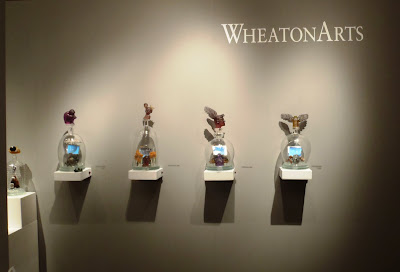From their website:
Fab Labs provide access to prototype tools for personal
fabrication, like a personal computer that can output
functional objects instead of images on a screen.
The labs have spread from inner-city Boston to Africa and
Norway, with projects tackling applications in areas
including healthcare,agriculture, housing, and communications...
In the spirit of MIT’s Fab Lab community outreach project,
FAB LAB DC will create a high-tech,fabrication
laboratory/community workshop in the heart of the
Nation’s Capital to advance creativity, innovation, and
collaborative projects. FAB LAB DC will serve and foster
the creative community by providing access to digital
fabrication technology, rapid prototyping,and the global
Fab Lab network.
There are some other online sites that allow one to upload files that
they will fabricate and ship to you - like Shapeways - a
Netherlands based site that now has opened offices in NYC.
Shapeways also has glass prototype facilities - but they have a
list of of rules for this process.
Click HERE to jump to Fab Lab DC's website.
Click HERE to jump to Fab Lab blog.


















































